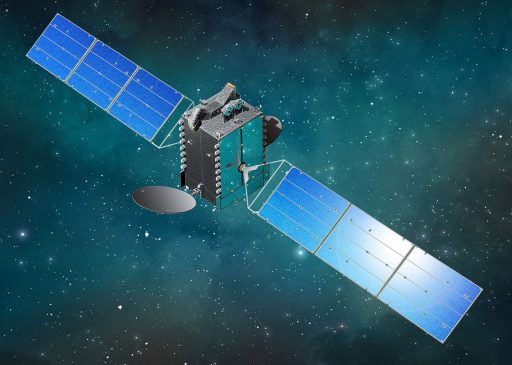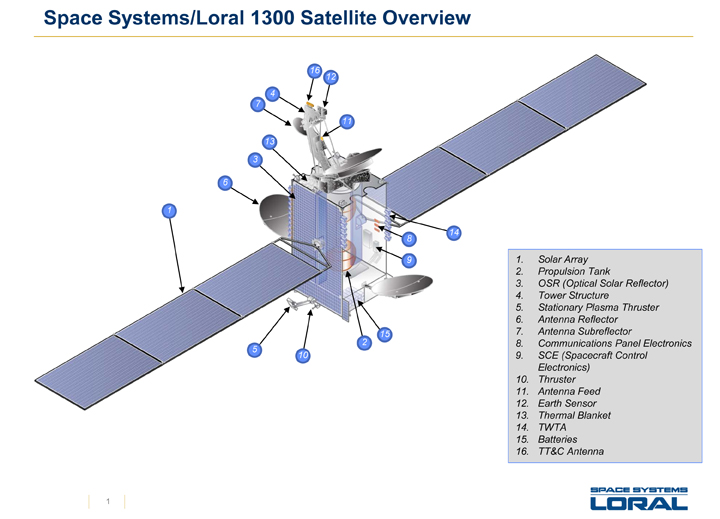BSat-4a Satellite

BSat-4a is a commercial broadcasting satellite built by Space Systems/Loral for operation by Broadcasting Satellite System Corporation (B-SAT), headquartered in Japan. The satellite hosts an all-Ku-Band payload to deliver Direct-to-Home (DTH) television services in Japan including advanced television services such as high definition and 4K/8K ultra-HD broadcasting services.
B-SAT was established in 1993 to procure, operate and lease transponders on communications satellites for Japanese government and commercial users. The Japan Broadcasting Corporation NHK is the largest stockholder and B-SAT has become a major satellite operator in the Asia-Pacific Region. The company operated its first and second generation satellites starting in 1997 featuring payloads of 4 Ku-Band transponders each and has since moved on to its third satellite generation comprising three satellites – BSat-3a launched in 2007 to replace the original BSat-1a/b satellites, the Lockheed-built BSat-3b launched in 2010 and BSat-3c, co-owned with SKY Perfect JSAT, has been in operation since 2011.

The 3,520-Kilogram BSat-4a satellite inaugurates the fourth generation of BSat spacecraft that will provide expansion capacity and eventually take over from the third generation satellites as they approach the end of their planned 15-year service lives. The BSat-4 generation hosts a significantly larger number of transponders to respond to growing demands for TV broadcasting in HD and Ultra-HD.
B-SAT ordered the BSat-4a satellite from Space Systems/Loral of Palo Alto, California in June 2015 – taking advantage of the company’s extensive flight experience with their SSL-1300 platform that has become one of the most successful GEO satellite platforms in history. The launch contract for BSat-4a was awarded to Arianespace in September 2015 for a late 2017 liftoff to ensure a maximum of margin between the satellite’s launch and the 2020 Tokyo Olympics that are expected to be broadcast in 4K and 8K resolution by the satellite. B-SAT obtained the required licenses for broadcasting 4K and 8K Ultra-HD resolution in late 2015.
The BSat-4a satellite hosts 24 Ku-Band transponders with the sole task of delivering high-quality and reliable direct-to-home television services throughout Japan in different resolution up to 8K. It is the first in the BSat series to be built by SS/L and will take up station at 110 degrees East in Geostationary Orbit and eventually become the replacement for BSat-3a once it heads into retirement in the early 2020s.
SSL-1300 is a flexible satellite platform that can be flown in different configurations to accommodate different communication payloads with a total power of 5 to 18kW.

Using different configurations, LS-1300 satellites can weigh from 2,200 up to 6,700 Kilograms featuring payloads of 12 to 150 transponders. Through optimizations, the number of transponders that can be accommodated can be increased even further. SSL-1300 was introduced in the late 1980s, but undergoes constant modifications going through a number of revisions over the years.
BSat-4a uses an intermediate-power variant of SSL-1300, featuring two three-panel solar arrays that deliver over 10.3kW of power to a dedicated system that conditions the satellite’s power bus and controls the state of charge of the vehicle’s batteries. Three-axis stabilization and navigation is accomplished by state of the art navigation sensors and reaction wheels.
The satellite is equipped with a chemical propulsion system for orbit-raising and stationkeeping using ~450-490-Newton main engine and a series of attitude control thrusters. LS-1300 also provides the option of an additional electric propulsion system, whether this option is exercised for BSat-4a is not known.

